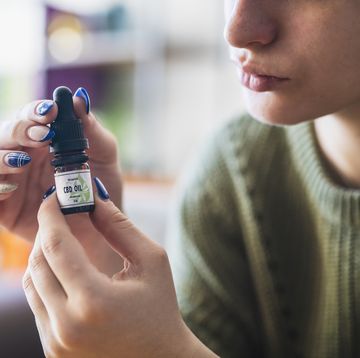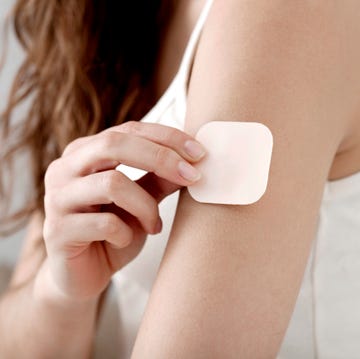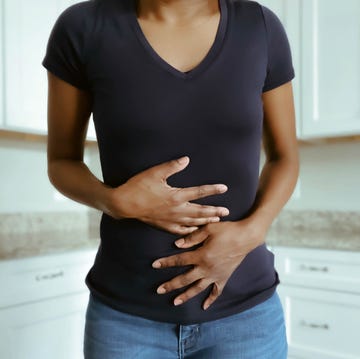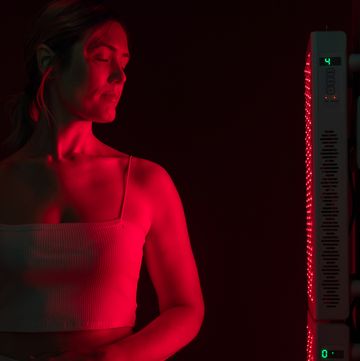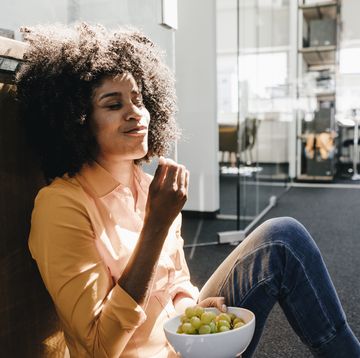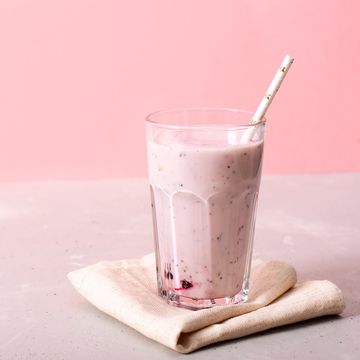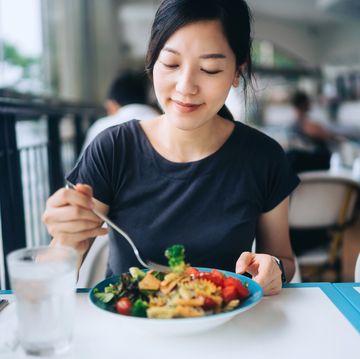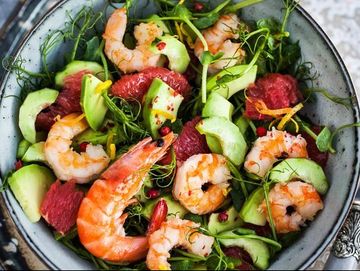These days it seems like you can’t peruse the avocado bin without running into someone on the keto diet. And the popularity of the high-fat, high-protein, low-carb diet has led some parents to wonder whether following a keto eating plan could be a healthy option for their children, particularly if they're overweight.
The main idea behind the diet is that you aim to get more of your calories from proteins and good fats (hey-hey, avo!) than carbohydrates so that you can reach a state of ketosis easier, which means your body is using fat for fuel instead of carbs. For a ton of celebrities (and probably your friends and fam) following a keto diet has resulted in major weight-loss transformations.
But for growing kids, is it ever safe to limit carbohydrate intake? Spoiler alert: Experts say no. “Children need carbohydrates to help with proper development,” says Elizabeth DeRobertis, RD, of Scarsdale Medical Group in Scarsdale, New York.
More From Women's Health

But it's worth understanding *why* the resounding warning about keto for kids is to avoid putting youth on the diet, so read on for all of the must-know facts.
How many carbs per day does a child need?
To start, kids need carbs for energy and fuel. That doesn't mean they have to get them from pastries and sugary cereal, but to cut kids down to getting only 5 to 10 percent of their calories from carbs is not healthy for children.
According to the current dietary guidelines, it’s recommended that carbs account for 45 to 65 percent of children’s total caloric intake, says Kristi King, a senior pediatric dietitian at Texas Children’s Hospital. “The calculations vary depending on the age of the child,” she says. And gender typically plays a role in the numbers too, with girls being on the lower end of the range than boys. Her calculations, based on daily recommended intake values for a healthy child, are:
- 1-3 years of age – 110-159 grams/day
- 4-8 years of age – 130-220 grams/day
- 9-14 years of age – 170-280 grams/day
- 14-18 years of age – 220-300 grams/day
While it's clear that kids need carbs, it's perfectly fine to focus on giving your kids the healthy kind. “Carbohydrates are in more places than just breads and pastries. You can find carbs in dairy, grains, vegetables, fruits, etc.,” King notes. So 130 grams of carbohydrates a day could look like three cups of milk, two pieces of wheat bread, a banana, an apple, and approximately two cups of veggies.
Is cutting carbs (even a little) ever okay for overweight kids?
Even if your doctor has recommended that your child lose weight, restricting carbs in any way (even if you're not following a strict keto diet) is not the best method.
Restrictive eating is not recommended for kids or teens, no matter their weight or activity level, says Jeremy Akers, PhD, director of the graduate dietetics program at James Madison University in Harrisonburg, Virginia.“There isn’t much reliable data on low-carbohydrate diet practices in children or adolescents.”
There are some medical centers that will prescribe a low-carbohydrate, high-fat diet for overweight adolescents who have gone through puberty, he says, but this is usually in extreme circumstances where the child has tried various types of behavioral weight loss techniques. “This is all done under a medical care team, as in, a physician, dietitian, psychologist, etc.,” he says. So, definitely not something you should try at home.
One way to get a handle on your kid’s carb load is by, again, focusing on healthy carbs that are fibrous and nutrient-dense and eliminating sugary, low-nutrient carbs. DeRobertis recommends “reducing foods such as cookies, chips, white bread, rice and pasta, and replacing them with more nutrient-dense snacks, such as: 100 calorie bags of nuts, 100 calorie cups of hummus and veggies, 100 calorie cups of guacamole and veggies, Greek yogurt cups, one piece of fruit, or string cheese.”
Promoting healthy eating patterns and increased physical activity is the best thing for families with overweight kids to do, says Lindsey Manz, RD at Banner Cardon Children’s Medical Center in Mesa, Arizona. She also recommends setting up an appointment with a registered dietitian to help guide the whole family on smart, healthy food choices.
What about using the keto diet to treat kids with epilepsy?
The “classic” version of the keto diet was a way to help prevent seizures in patients with epilepsy. In studies from the 1920s, the diet wasn't about weight loss at all, and consisted mainly of butter, whipped cream, oils, and mayonnaise. Not the most enjoyable diet, but it was effective in limiting seizures.
“Yes, the keto diet has been shown to help with certain types of epilepsy in children, but it is not the same eating plan as a keto diet for weight loss,” says Audrey Koltun, a registered dietitian at the Cohen Children’s Medical Center in New Hyde Park, New York. “It is a calculated eating plan and the child needs to be followed by a neurologist and registered dietitian. If your child deal has epilepsy, talk to your doctor about any benefits of following some version of the keto diet before you make any changes to how they eat.
Are there any side effects kids might experience on the keto diet?
Sharing a keto meal you've made for yourself with your kid every once in a while is NBD, but if you were to have your child on a keto diet regularly, you would start to see some negative side effects, like fatigue, moodiness, and stomach discomfort, Koltun says. “Longer term, you’re looking at things like constipation—thanks to the lack of fiber in the diet—and nutrient deficiencies from inadequate amounts of some vitamins and minerals such as magnesium, vitamins B, C, and D, and calcium.”
The bottom line: Keto + kids = not a healthy mix.
Nicole Blades is a novelist, speaker, and freelance journalist who covers women's health, race and culture, books and publishing, and stories of reinvention for various national print and digital magazines. She lives in New England with her husband, son, dog, and a sky-high stack of books by her bedside that she calls Mount Nightstand. Find out more about her at NicoleBlades.com.

